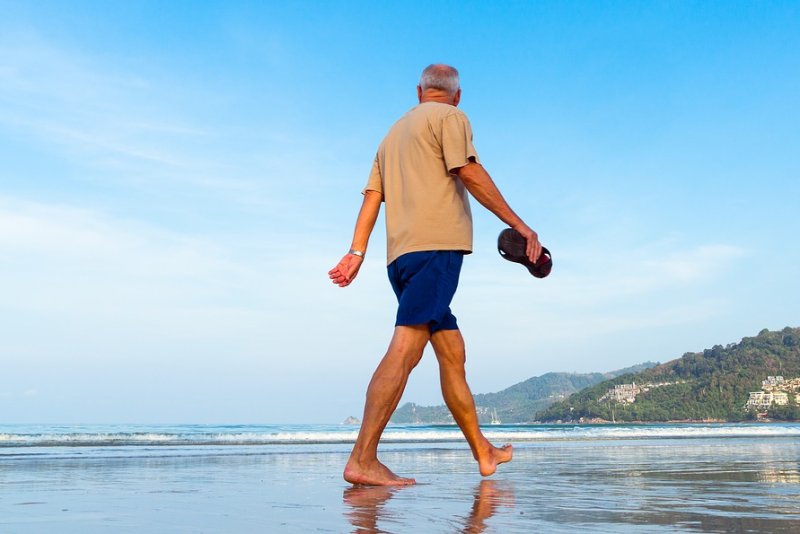Moving more throughout the day offers enhanced weight-loss benefits for older, severely overweight adults, even without structured exercise activities, a new study shows. Photo by qimono/Pixabay
Dec. 21 (UPI) -- Moving more throughout the day offers enhanced weight-loss benefits for older, severely overweight adults, even without structured exercise activities, a study published Tuesday by the journal Obesity found.
Participants in a regimen called SitLess, which asked them to move around more frequently throughout the day to achieve daily step counts, lost weight and kept the pounds off more effectively than those in more structured programs, the data showed.
They also were more likely to remain engaged in the program than those who participated in structured aerobic exercise and weight-loss treatments, the researchers said.
"Physical activity is one of the most potent lifestyle medicines, [but] unfortunately, many have difficulty sticking to a traditional exercise regimen in the long term," study co-author Jason Fanning told UPI in an email.
"We hope that these findings empower older adults to seek out an array of enjoyable activities that help them to move more throughout the day and to sit less," said Fanning, an assistant professor of health and exercise science at Wake Forest University in Winston-Salem, N.C.
Just over 42% of all adults in the United States meet the criteria for obesity, or being severely overweight, meaning they have a body mass index over 30, according to the Centers for Disease Control and Prevention.
BMI is a person's weight in kilograms divided by their height in meters squared, and those with a level above 30 are considered obese, the agency says.
The prevalence of obesity is slightly higher, about 43%, in adults age 60 years and older, it estimates.
For this study, Fanning and his colleagues recruited 183 obese, or severely overweight, adults ages 65 to 85 years from Forsyth County, N.C., and surrounding areas in six waves through local advertisements.
Participants recruited in the first four waves of this study completed procedures before the onset of the COVID-19 pandemic in the United States, and the findings with this group were included in the final analysis, the researchers said.
The average participants were age 70, primarily female, highly educated and had high blood pressure and arthritis, with a body mass index of 30 to 45, the data showed.
All participants received a Fitbit Alta activity monitor at least two weeks before starting the study, and the device was paired with a mobile health application tailored to each regimen, they said.
The app facilitated contact between group members and research staff between intervention visits, and was designed to support self-monitoring of activity by providing group-specific, visual feedback of Fitbit activity data, the researchers said.
All of the study participants were asked to adopt a reduced-calorie diet to help them lose weight, the researchers said.
In addition, about one-third of the participants engaged in an aerobic exercise program that involved brisk walking for a little more than three hours per day for four to five days per week, they said.
Another one-third of the participants were also enrolled in a regimen called SitLess, in which they were asked to achieve daily step counts by moving throughout the day, according to the researchers.
The remaining one-third of participants were enrolled in the weight-loss diet, aerobic exercise regimen and SitLess, the researchers said.
"To help participants to achieve their step goal by moving throughout the day, each participant had access to an activity monitor paired with a custom study app that plotted their patterns of stepping throughout the day based on steps collected from an activity monitor," Fanning said.
"Participants sought to have movement spread fairly evenly throughout the day while working to avoid any long periods without movement," he said.
After six months, participants in the weight loss and aerobic exercise group lost about 18 pounds, on average, while those in the weight loss and SitLess group lost an average of about 16 pounds, the data showed.
Participants engaged in all three regimens also lost an average of about 16 pounds, the researchers said.
However, one year later, participants in the weight loss plus exercise group gained about 10 pounds of the lost weight back, on average, while those in the two SitLess groups regained about 6 pounds, according to the researchers.
Group meeting attendance was 80% in the weight loss and SitLess group, 84% in the weight loss and aerobic exercise group and 78% in the weight loss, aerobic exercise and SitLess group, the data showed.
Those in weight loss and aerobic exercise attended 79% of exercise sessions on average, whereas weight loss, aerobic exercise and SitLess participants attended 65% of their sessions, the researchers said.
"This is encouraging evidence that 'moving more, more often' is beneficial for inclusion in weight loss and weight maintenance efforts for older adults," kinesiologist Alexandra Lee, who was not part of the research, said in a press release.
In addition, "this ... may be perceived as more accessible and feasible for people pursuing sustained weight loss since it does not require structured exercise sessions and should be explored in future research," said Lee, a post-doctoral scholar in kinesiology at Pennsylvania State University.















